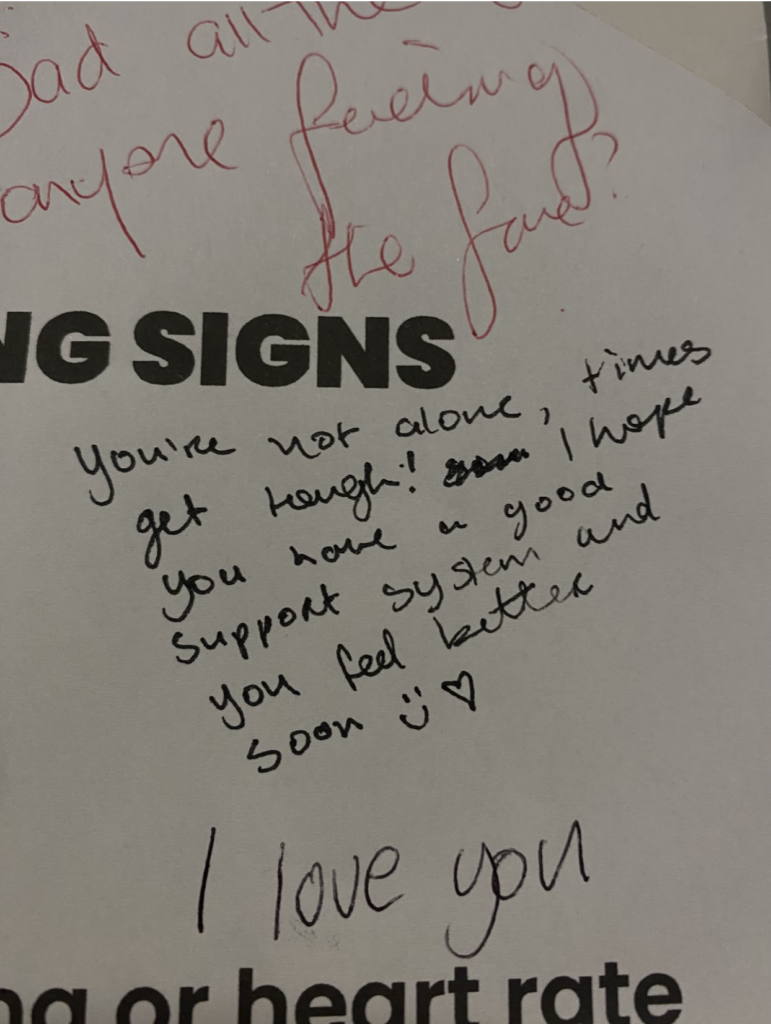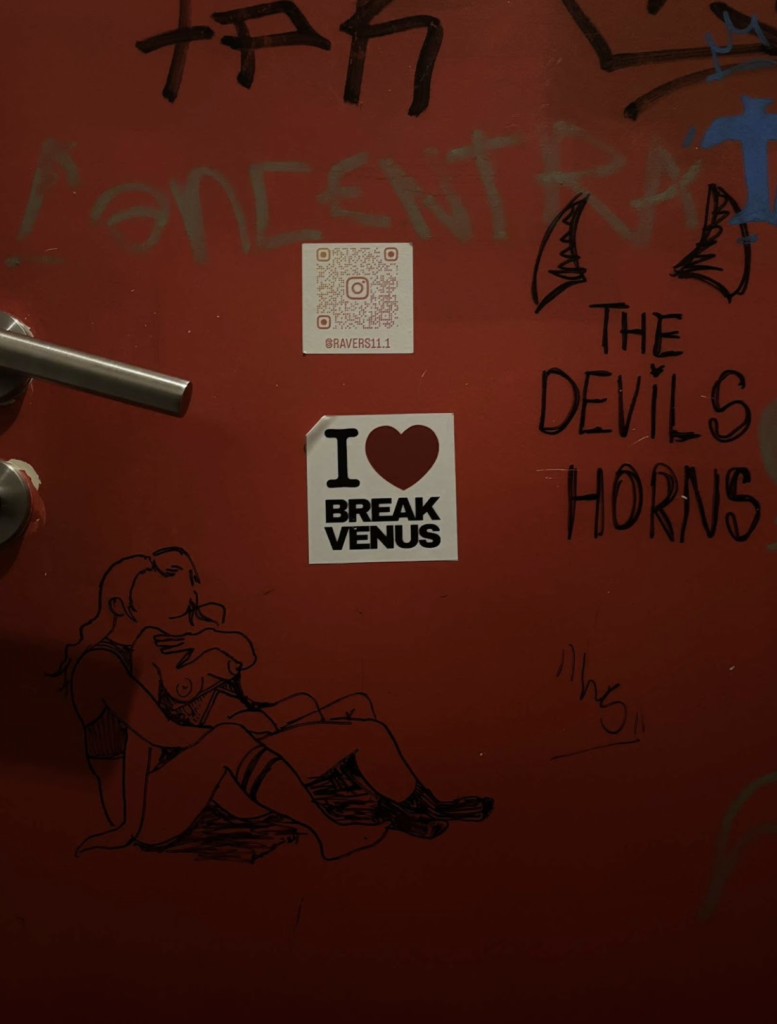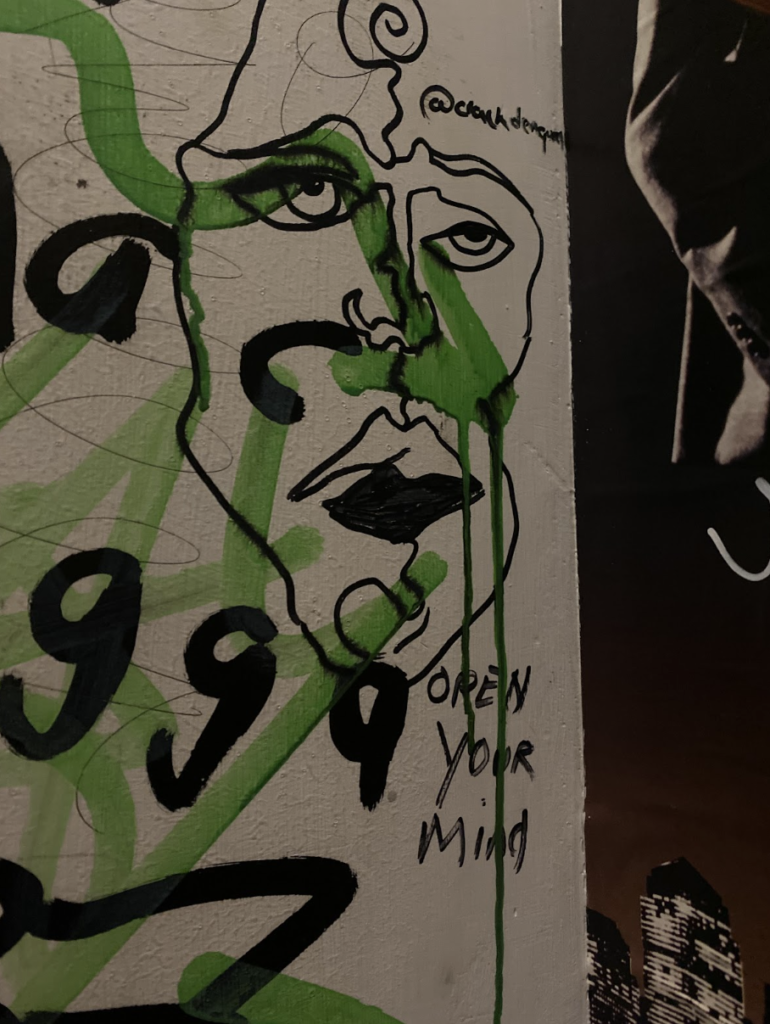
A bathroom stall: walls of white plastic or plain concrete. What some see as a simple necessity for a public place others see as a blank canvas. Beneath carvings, scratches and paint, ink can often be found. Among the words and scribbles on the wall, pure and raw, emotion is written. A crooked and uneven heart is drawn in red. A quote of inspiration is scribbled down. A joke between friends, or even a phone number – often fake.

It’s in these bathroom stalls scattered between nightclubs, restaurants, educational institutes and bus depots where silence is expected, but deep thoughts and curious questions are often posed. Messages overlap like waves in the ocean. Words left not for fame or recognition, but connection. It may not be a public community, but reading these messages makes the observer feel a part of something bigger. There’s an undeniable beauty in the rawness and thought-process behind it all.
What actually compels someone to pick up a marker or pen and write their thoughts on a wall? Is it that this might never be traced back to them? What drives a person to share their innermost fears or greatest joys in the most transient of spaces – a place that is meant to be so private but is shared with so many?

Perhaps it’s the freedom of anonymity or the hope that someone, really anyone, might read their words and feel seen by another; by one who they might never meet. Anonymity is liberating. To be free from the weight of identity or consequences. The potential of friends, family or others from a wall-artist’s inner circle to read their work but never know. The element of never knowing who has written what can be exciting.
Bathroom walls give a platform to anyone from any background or ethnicity to express their thoughts without judgement. It’s a way to heal through self-expression while reaching out to others. As humans, we need to be heard. We have a sense of passion for something in life and we want it to be heard, even if we remain nameless. Sometimes the written words speak encouragement to the writer themself.

The walls of these bathrooms carry an intimacy and become a sport of unspoken support system. Strangers leave behind words of comfort, encouragement and solidarity for those who will pass through next. The messages written often address important social issues, such as activism, mental health perspectives, LGBTQ+ equality and resilience through tough times. The intimate feeling of reading other peoples thoughts can spark “conversation” in the form of word or sentence chains. These conversations may never be read by the authors but can be carried on by the readers.

We all bear scars, imperfections and the imprints of our past experiences, much like the walls of these restrooms. Some are profound and unavoidable, while others are subtle and almost perceptible. The ink-stained walls, covered in messages of humour, hope, and sadness, reflect how we cling to our feelings, memories and unspoken ideas. We wear our own stories on our skin and in our hearts—some purposeful, some unintentional, all a part of who we are—just as people etch their truths onto a stall’s surface. These markings serve as a reminder that beauty and suffering frequently coexist, forming and defining who we are as human beings, much like the messages scribbled in secret.




